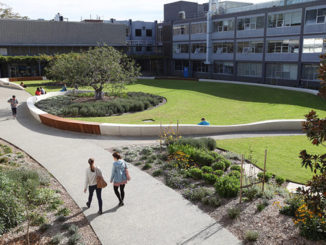The recent publication of the report Working Group I contribution to the Sixth Assessment Report of the IPCC offers a warning to the world that there is a need to take action immediately. The world is seeing faster warming and Human-induced climate change already affects many weather and climate extremes in every region across the globe. The Working Group also state that many changes due to past and future greenhouse gas emissions are irreversible.
The report also offers some hope with Co-Chair Valérie Masson-Delmotte stating that “We now have a much clearer picture of the past, present and future climate, which is essential for understanding where we are headed, what can be done, and how we can prepare.”
Over the past few months, we have seen the impact of climate change around the world with fires in Greece, Canada, Russia, Turkey, Argentina and floods in Europe, Asia, and other parts of the world. Climate change is intensifying the global water cycle with flooding, drought. Sea-level rise is also going to have a long term impact with IPCC report stating that coastal areas will see continued sea-level rise throughout the 21st century, contributing to more frequent and severe coastal flooding in low-lying areas and coastal erosion with sea-level events that previously occurred once in 100 years could happen every year by the end of this century.
The IPCC offers several possible climate scenarios for 1.5°C, 2°C and 4°C resulting in melting permafrost, increases in the frequency and intensity of heatwaves, droughts, flooding, ocean warming various other dire outcomes. However, humans have the ability to modulate human-caused changes and take action to reduce CO2 to net-zero and dramatically reduce Greenhouse Gases (GHG), especially Methane (CH4).
For landscape architects and those in the built environment, the IPCC report highlights the impacts of urbanization and the heat island effect that amplifies climate change due to tall buildings being placed too close together and reduces ventilation, along with limited vegetation and large areas of hard surfaces that absorb heat in the day and emit it at night. Urbanization also increases mean and heavy precipitation over and/or downwind of cities, resulting in greater runoff intensity.
As landscape architects, we must not despair; we need to mitigate the impacts of climate change by undertaking revegetation, increasing urban tree canopies, and protecting waterways, coastlines, and natural environments. We need to advocate for urban development that promotes sustainable land use, includes active and connected transport, provide a net social benefit, uses alternative energy with minimal usage, is constructed with the smallest carbon footprint possible and provides room for water and greenspace. These are only a few of the ways that we can make a difference and have an impact on climate change. This report is one of several from IPCC working groups as part of the Sixth Assessment Report; the Mitigation of Climate Change report to be published in March 2022 should be read by all landscape architects.
Landscape architects have already voiced their concern and hope after the IPCC released its report with Kate Orff from Scape appearing on CNN to advocate for “It’s time to invest in natural infrastructure.”
Michael Grove, FASLA and Chair of Landscape Architecture at Sasaki, provided these thoughts to WLA recently “The IPCC report paints an accurately grim portrayal of our climate’s future if we fail to take immediate action. Alongside those around the globe who are suffering from devastating floods, forest fires, and drought, I too share a sense of frustration, fear, and immense sadness. But the emotions we must be careful not to succumb to are despair and despondency. Humans have created these challenges, and humankind has the imagination and intrepidity to overcome this. The very survival of our species is at a precipice, and it is incumbent upon us to act, align, and adapt now or risk unfathomable losses ahead.“
If you would like to provide your insights and response to the IPCC report, please email submit@worldlandscapearchitect.com
This article was written by Damian Holmes, Founder & Editor of World Landscape Architecture.
Image: Changing by the artist Alisa Singer. “As we witness our planet transforming around us we watch, listen, measure … respond.” Supplied by IPCC.



